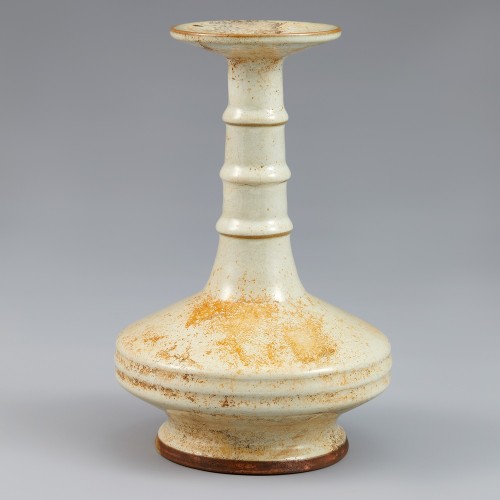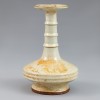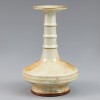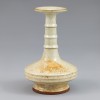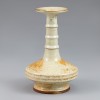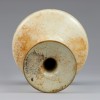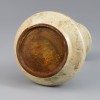본문
전체적으로 월백유(月白釉)가 시유된 균요 병입니다.
유약 표면은 다소 거칠며, 부분적으로 빙렬이 형성되어 있습니다. 밖으로 넓게 젖혀진 구연부는 편평하고 넓적한 형태로 그릇 같은 인상을 줍니다. 긴 목에는 대나무처럼 볼록한 선이 표현되어 있습니다. 어깨부터 벌어져 복부는 둥근 원형을 이루며, 측면은 울퉁불퉁한 곡선을 따라 입체적으로 표현되었습니다. 저부는 아래로 수그러들다가 굽에서 다시 넓어지는 형태로, 둥근 굽에는 유약이 시유되지 않았습니다. 북송시대의 균요는 희귀하고 부장품 불순물이 그대로 남아 있으며 형태나 모든 면에서 희귀성을 보입니다.
钧窑瓶通体施月白釉。
瓶体局部带有冰裂纹,釉面略显粗糙。瓶口外撇,呈平坦宽阔的碟状;细长的颈部饰有凸起的线条,仿若竹节。肩部逐渐展开,至腹部呈扁圆形,腹部侧面以起伏的曲线表现立体感。下腹部微内收,至底足外撇。此件作品属于北宋时期的稀有器物,保留了当时作为随葬品的痕迹,并且在形态及各方面展现其珍贵性。
A Jun ware vase entirely covered in a 'moon-white' glaze (月白釉).
The glaze surface is slightly rough with partial crackles. Its outward-flaring rim is wide and flat, giving the piece a bowl like profile. The long neck is decorated with protruding lines resembling bamboo nodes. Below the shoulder, the body swells into a rounded belly, with sculpted, uneven curves adding a dynamic three-dimensional effect. The lower body tapers before flaring outward again at the base, where the circular foot remains unglazed. Jun ware from the Northern Song Dynasty is exceptionally rare, with preserved traces of burial impurities highlighting its distinctiveness in both form and craftsmanship.
